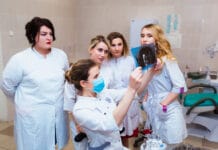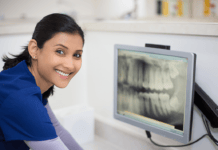Regenerative medicine is a group of biomedical approaches to clinical therapies that might involve the use of stems cells. It looks at the process of replacing or regenerating human cells or tissues to regain normal function. Stem cells from umbilical cords, marrow, blood, fetal material, and teeth have been researched and tested for various cures for serious problems such as cancer, cognitive decline, and organ replacement. Though, there are some ethical challenges with the use of stem cells. Multipotent dental stem cells collected from the pulps of both deciduous teeth and permanent teeth are powerful and, as a result, can be stored for possible future use.
Banking on Teeth – Stem Cells and the Dental Office outlines the tooth banking process, lists its values, and attempts to determine whether the various programs, in their current state, are worth it for our patients. So, what is dental stem cell banking? What do you say to your patients if they ask about it?
Banking Teeth for Stem Cells
A child’s deciduous teeth, or even third molars, contain potentially life-saving stem cells that can be harvested and banked at your expense, for when technology catches up to our medical aspirations. Stems cells are contained in:
- Deciduous teeth
- Adult dental pulp
- Periodontal ligaments
- Alveolar bone
- Apical papilla
- Dental follicles
- Oral tissues, such as epithelium, gingiva, salivary glands
While stem cells can be harvested from all the intraoral places, the best is in those deciduous teeth. Scientists and dental professionals haven’t come to a conclusion on how effective stem cells are in recently removed carious teeth. Healthy stem cell recovery is always the goal.
Stem cell banks for teeth are much like the banks that hold placental cord stem cells and bone marrow. A recently extracted or exfoliated tooth should be transported in pasteurized milk or specialized saline solution if the goal is stem cell harvesting or reimplantation. “Professional extraction shortens the time the tooth is out of physiological conditions likely to preserve the pulp tissue.”
Stem cells are extracted by mechanical and enzymatic preparations of a single cell population and readied for cryopreservation, which means that they are frozen and stored for experimentation or future use, medically or dentally.
The Pros and Cons Of Banking
Each tooth banking company works differently in the U.S. and other countries, so our patients need to do their homework if banking is a decision they come upon. Sometimes, certain companies keep their harvesting or cryopreservation methods a secret for one reason or another. Knowing those reasons can help your patient make an informed decision.
Until more research is done on actual dental stem cells, someone who cannot afford it may lose out on anywhere between $500 to $3,000 for the process, and some banks, or plans, come with annual maintenance fees.
To get ahead of the crowd, scientists suggest that dental professionals find a company that they support, get to know the ins and outs, and be prepared to share your knowledge when the questions arise, as they will, more and more. Most of the initial work will fall upon our shoulders if these stem cells prove to be helpful.
So, who knows if tooth banking will be a passing fad or if it will become the dental communities’ grand contribution to medical history?
Conclusions
While the study of dental stem cells is still relatively new, and their full power is yet to be unleashed, it isn’t necessary at this time unless the cost of the process isn’t a problem for the patient. Science hasn’t yet cemented these cells as a true cure for any illness, so it is currently a luxury and an elective process.
A patient, though, who may face a future degenerative or serious illness, for example, may be great candidates for the process, as these cells could possibly give them a future, when otherwise there may have been none.
As of now, we don’t know where the science will go, but the chances are strong that these cells can do much of what other, sometimes more controversial, stem cells can do. Perhaps even more. So far, for most of us, harvesting stem cells isn’t in our job description. Yet.











